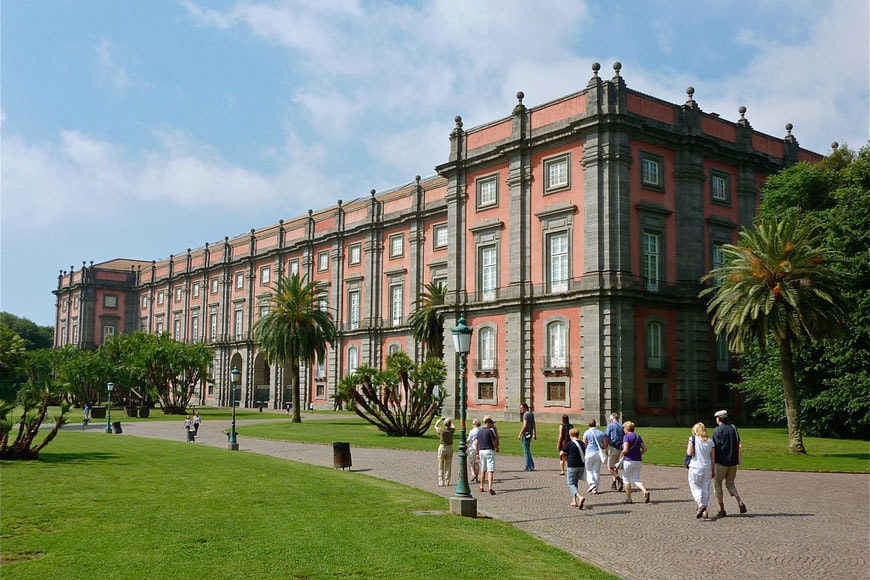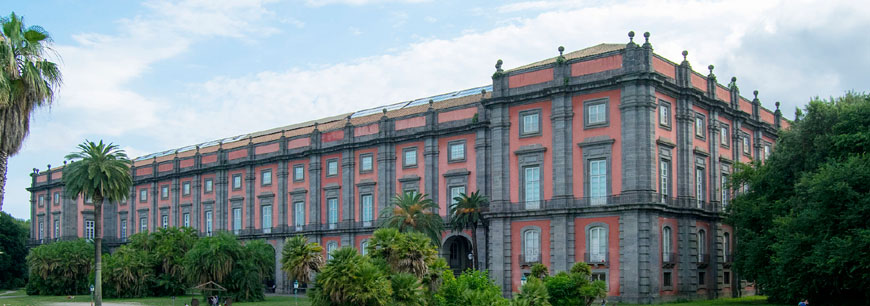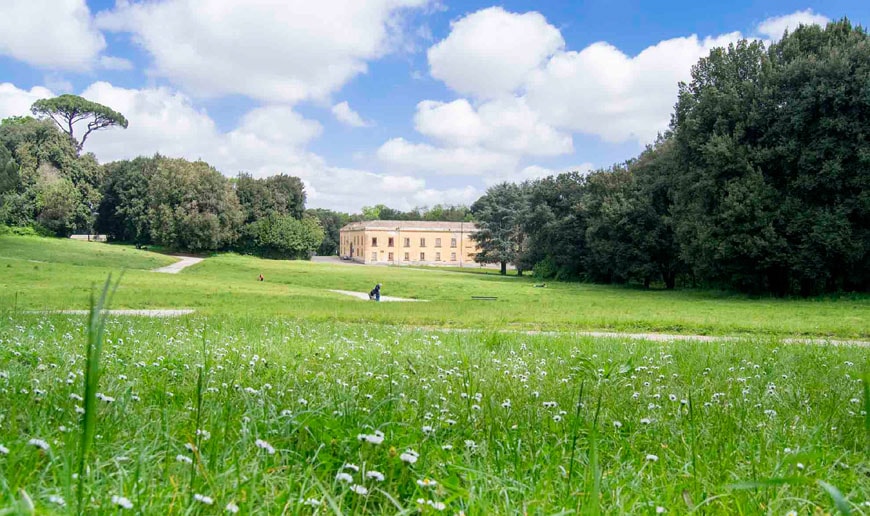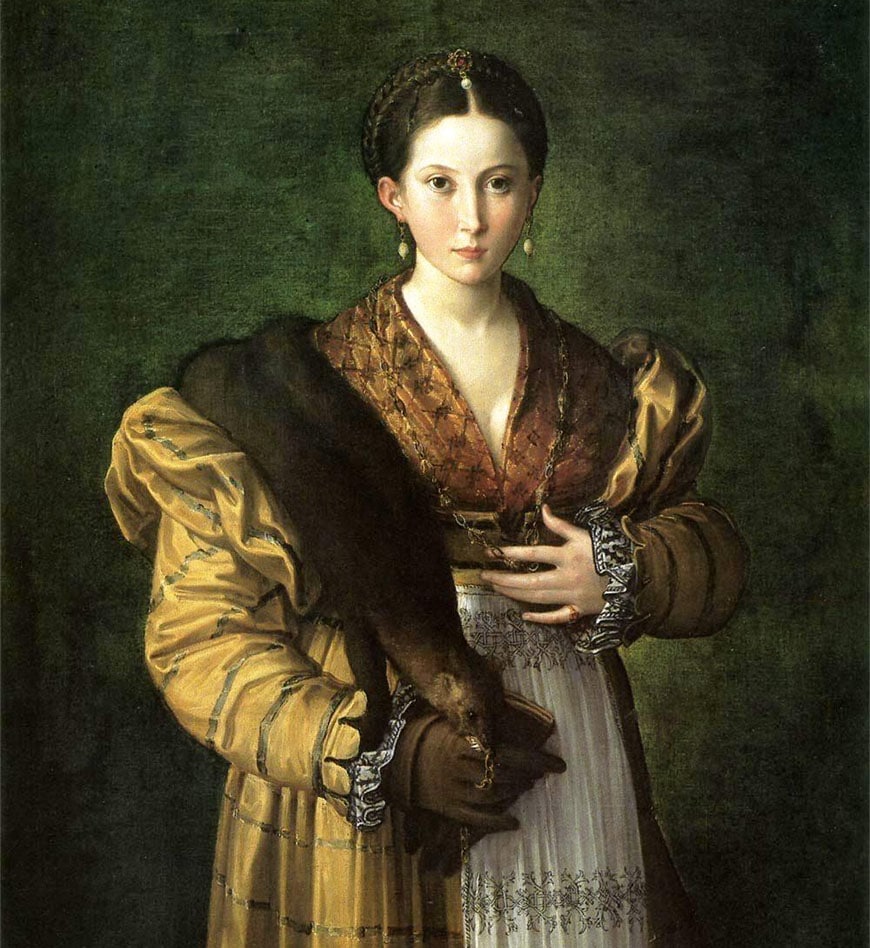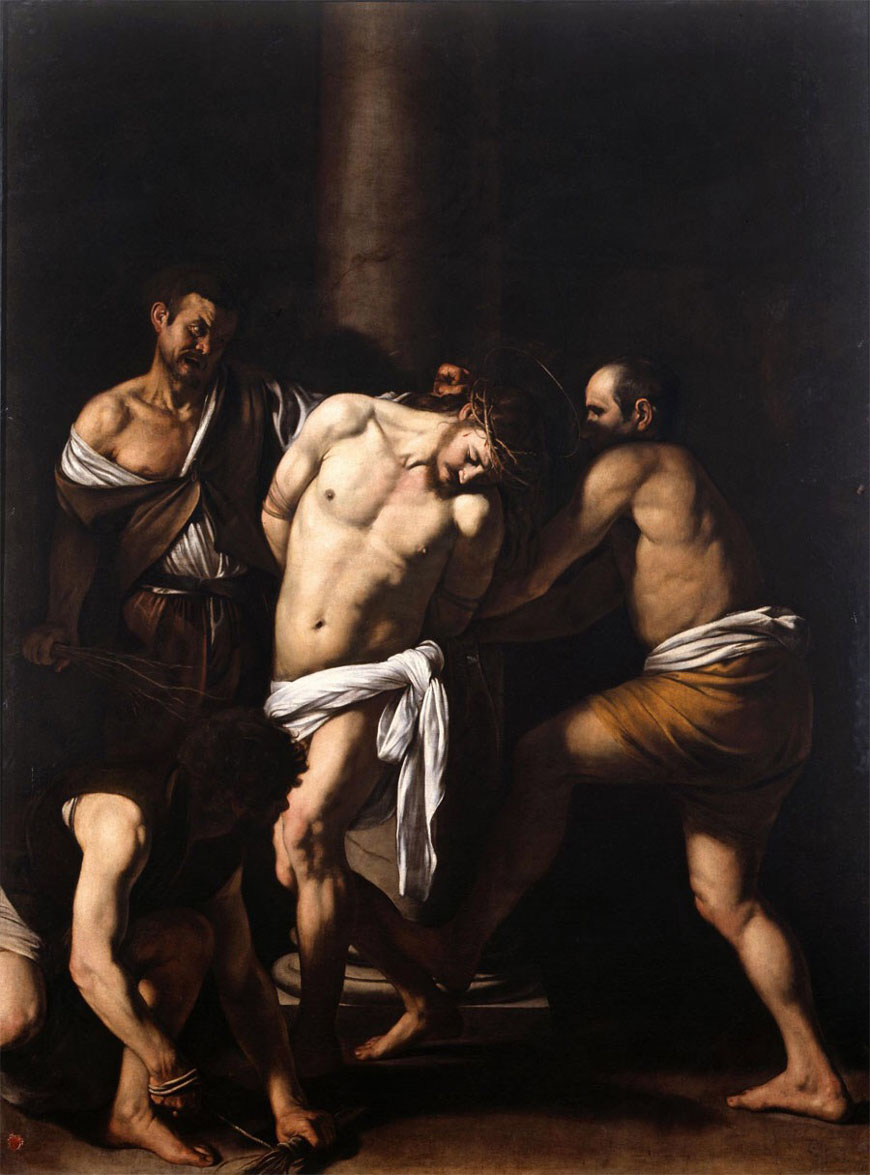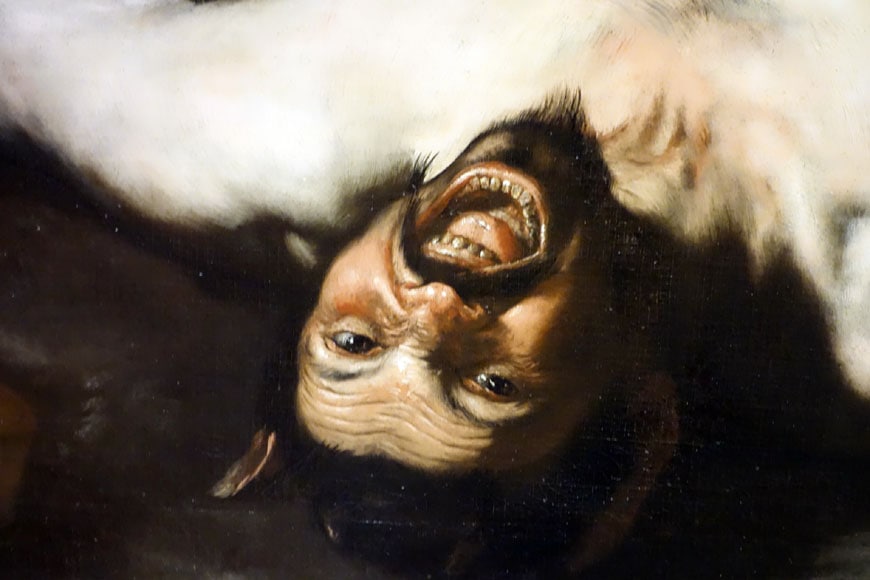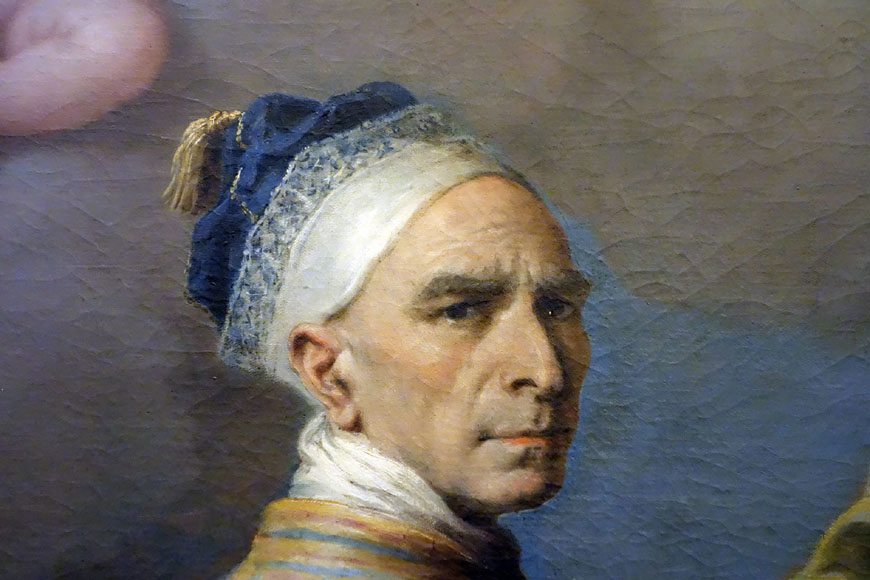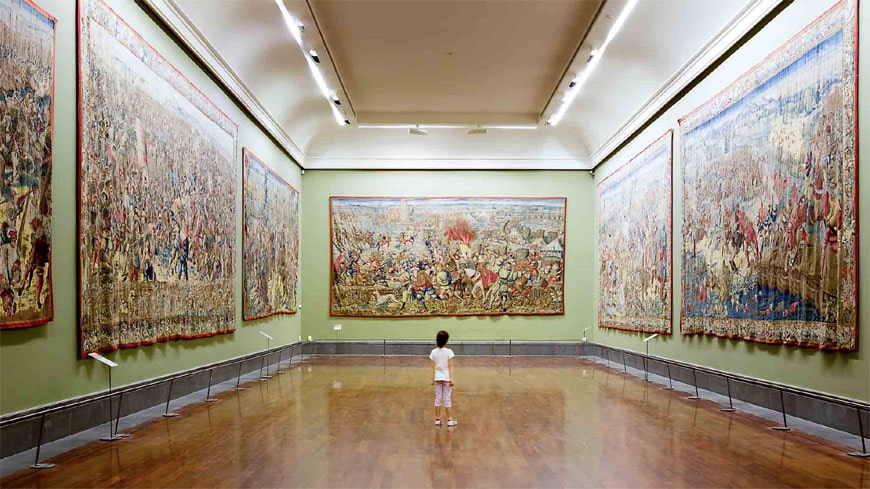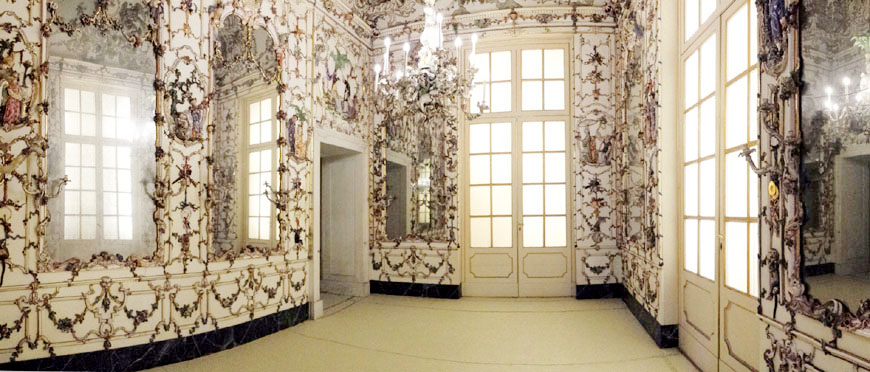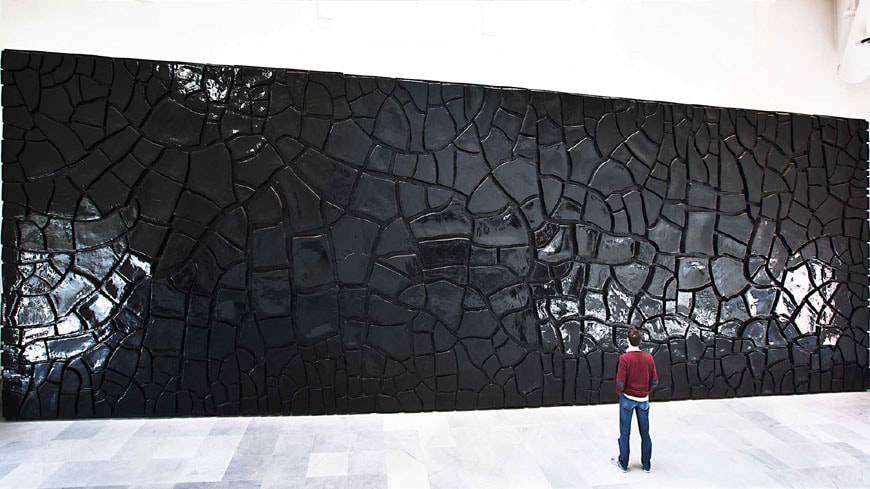see National Museum of Capodimonte website

History and location
by Riccardo Bianchini
The museum was founded in 1758 by Charles of Bourbon – King of Spain, Naples, and Sicily – in order to exhibit the art collection of his family.
For this purpose, the king commissioned an imposing palace located on top of the hill of Capodimonte, a beautifully-located area of Naples overlooking the city and the Mediterranean Sea.
The palace was designed by various architects in an architectural style which combines baroque and neoclassical elements, near the southern edge of a 306-acre park.
In the 200 years following its inauguration, the museum experienced several up and downs, including two artwork plundering, one by the French in 1799, and another by the German troops during the WW2.
In 1957, the museum reopened after major restoration and modernization works. Along with exhibition spaces, the museum building include a 180-seat auditorium, a restoration workshop, a cafe, and a bookshop.
Royal Palace of Capodimonte, Naples; main facade, park, and Banquet Hall; photos by Alessio Cuccaro and Giuseppe Salviati, courtesy of Museo di Capodimonte
Collections
The Museum of Capodimonte holds collections of paintings, drawings and prints, photographs, porcelains, arms and armors, works of decorative arts, and tapestries. Sculptures on view includes pieces from the Renaissance to the early 19th century, including some works by Antonio Canova; while most of the antique sculptures of the former Bourbon Royal collection are now of view at the National Archaeological Museum in Naples. Furthermore, the Palace of Capodimonte, its decorations, and its park are artworks in themselves, and an integral part of the visit to the museum.
Old Master’s painting collections
Paintings in the collections include masterpieces by Simone Martini, Masaccio, Perugino, Mantegna, Raphael, Titian, El Greco, Giulio Romano, Botticelli, Pinturicchio, Correggio, Parmigianino, Pieter Brueghel the Elder, Joachim Beuckelaer, Jusepe de Ribera, Guido Reni, and Caravaggio, among others. The museum also holds rare underdrawings by Michelangelo and Raphael.
Tapestry hall
The hall presents seven large Flemish tapestries made in Brussels between 1528 and 1531 after drawings by Bernard van Orley.
Collection of Contemporary Art
The museum also features an important permanent exhibition of contemporary art with works by Giulio Paolini, Daniel Buren, Joseph Kosuth, Michelangelo Pistoletto, Jannis Kounellis, Sigmar Polke, Candida Höfer, and Sol LeWitt, among others. The collection also includes special commissions and donations, such as the monumental Grande Cretto Nero by Alberto Burri donated to the museum by the artist himself.
Photographic gallery
The gallery mostly features works by celebrated Italian photographer Mimmo Jodice.
Porcelain gallery
This permanent exhibition presents a collection of Neapolitan and European porcelain statuettes and tableware, mostly dating back to the 18th century. The gallery is part of the so-called Royal Apartment, which also includes the famous Porcelain Cabinet.
Collection of arms and armors
The collection comprises swords, knives, lances, axes, firearms, armors, and helmets dating from the 16th century to late 18th century.
Activities
The event program of the Museum of Capodimonte includes major temporary exhibitions of art, lectures, conferences, concerts, film screenings, educational activities for children and schools, guided tours, and special events.
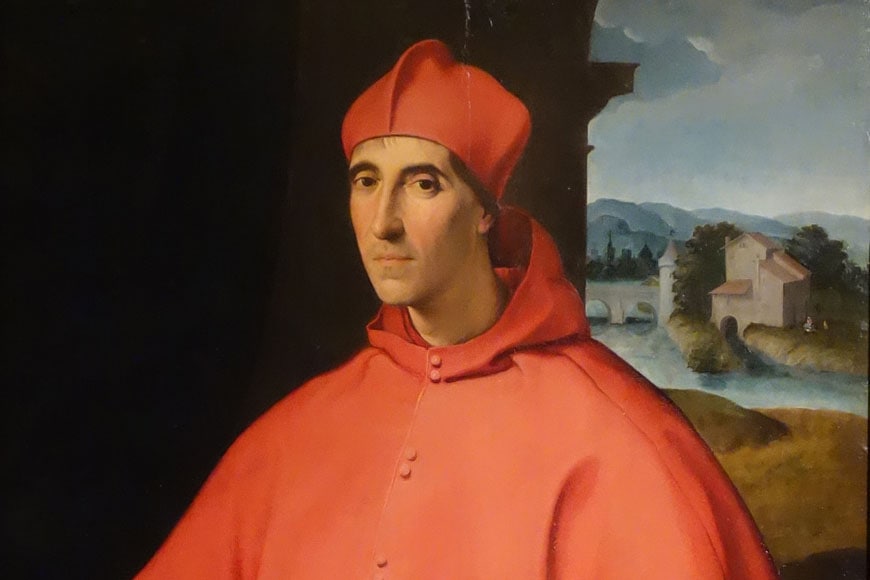
Raphael (Raffaello Sanzio), Portrait of Cardinal Alessandro Farnese (detail), 1509-1511, oil on wood; photo: Mike Steele
Parmigianino (Girolamo Francesco Maria Mazzola), Portrait of a young woman, also known as Antea (detail), ca. 1534, oil on canvas; image courtesy of Museo di Capodimonte
Caravaggio (Michelangelo Merisi da Caravaggio), The Flagellation of Christ, 1607, oil on canvas; photo: Rodney
Jusepe de Ribera, Apollo and Marsyas (detail), 1637, oil on canvas; photo: Mike Steele
Paolo de Matteis, self portrait (detail), 1714, oil on canvas; photo: Mike Steele
The Tapestry Hall; photo courtesy of Museo di Capodimonte
The Porcelain Cabinet; photo: Antonio Manfredonio
Alberto Burri, Grande Cretto Nero, 1978, acrylic and PVA on Celotex; photo courtesy of Museo di Capodimonte
Andy Warhol, Vesuvius, 1985, acrylic and ink on canvas; photo: Sallie
